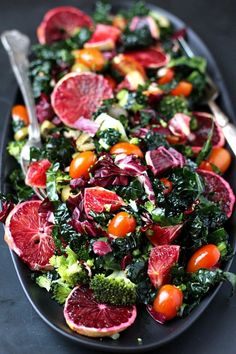Growing your own food is a rewarding endeavor that not only enhances your culinary experiences but also promotes sustainability and health. With a little planning and effort, you can transform your garden—or even a small windowsill—into a source of fresh, flavorful ingredients. This guide will walk you through the essentials of growing your own produce and herbs, ensuring that you can enjoy delicious meals straight from your garden.
### **1. Start with Planning**
Before diving into gardening, it’s crucial to plan what you want to grow. Consider the following steps:
- **Assess Your Space**: Determine whether you have a garden, balcony, or just a windowsill. This will influence your choice of plants.
- **Choose Your Crops**: Select vegetables and herbs that you enjoy eating and that thrive in your climate. Some easy options include tomatoes, lettuce, basil, and peppers[2][5].
- **Seasonal Planting**: Research the best planting times for your chosen crops. Most vegetables have specific seasons when they grow best, so aligning your planting schedule with these seasons will yield better results[3].
### **2. Prepare Your Garden or Containers**
Depending on your available space, you can either create a traditional garden bed or use containers:
- **Raised Beds**: If you have a yard, consider building raised beds to maximize space and improve soil drainage.
- **Container Gardening**: For limited spaces, use pots or recycled containers. Ensure they have drainage holes and are at least 6 inches deep for proper root growth[2][5].
### **3. Selecting Quality Soil**
Healthy soil is the foundation of successful gardening:
- **Soil Quality**: Invest in high-quality potting mix for container gardening or amend garden soil with compost to improve its nutrient content.
- **Testing Soil**: If you're using garden soil, consider testing its pH and nutrient levels to determine if any amendments are needed.
### **4. Growing Your Ingredients**
Once you’ve prepared your space and chosen your crops, it’s time to plant:
- **Sowing Seeds**: Follow the instructions on seed packets regarding depth and spacing. For beginners, starting with seedlings from a nursery can simplify the process.
- **Watering**: Regularly water your plants, especially during dry spells. Ensure that the soil remains moist but not waterlogged.
- **Sunlight**: Most vegetables need at least 6 hours of sunlight daily. Position your plants accordingly to maximize their growth potential[2].
### **5. Maintenance and Care**
Caring for your plants involves regular maintenance:
- **Weeding**: Keep the area around your plants free from weeds that compete for nutrients and water.
- **Pest Management**: Monitor for pests and diseases. Use organic methods like neem oil or insecticidal soap if necessary.
- **Harvesting**: Regularly harvest ripe produce to encourage further growth and prevent overripening.
### **6. Cooking with Fresh Ingredients**
The best part of growing your own food is enjoying it in the kitchen:
- **Freshness Matters**: Homegrown ingredients often taste better than store-bought options because they are harvested at peak ripeness[4].
- **Experiment with Recipes**: Use fresh herbs and vegetables in salads, sauces, or as side dishes. Simple preparations like roasting or sautéing can highlight their natural flavors.
- **Preservation Techniques**: Consider canning, pickling, or freezing excess produce to enjoy later in the year[3].
### **7. Community Engagement**
Consider joining local gardening groups or community-supported agriculture (CSA) programs:
- **Community Gardens**: Participate in community gardens where you can share knowledge and resources with fellow gardeners[2].
- **CSAs**: Support local farmers by joining a CSA that provides seasonal produce directly from farms.
### **Conclusion**
Growing your own ingredients is an enriching experience that fosters a deeper connection to the food you eat. By planning carefully, nurturing your plants, and enjoying the fruits of your labor in delicious meals, you can elevate your culinary adventures while promoting sustainability. Whether you have a sprawling garden or just a few pots on a windowsill, every effort counts towards creating fresh, flavorful dishes right from garden to plate.
Citations:
[1] https://www.gobble.com/blog/how-to-select-fresh-ingredients/
[2] https://www.mondomulia.com/2021/03/03/how-to-grow-your-own-food/
[3] https://growinghome.com.au/dirt-to-dinner-guides/cooking-from-garden/
[4] https://www.profoundfoods.com/the-foodie-blog/farm-to-table-delights-savoring-the-benefits-of-cooking-with-farm-fresh-ingredient
[5] https://personal.nedbank.co.za/learn/blog/farm-to-table-food-supply-climate-impact.html
[6] https://culinarycrafts.com/how-to-find-find-fresh-ingredients/
[7] https://itiablog.wordpress.com/2011/01/18/the-art-of-preserves/
[8] https://www.youtube.com/watch?v=vW1r8NwUX-8

Comments
Post a Comment